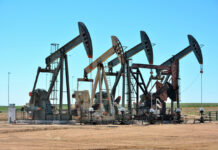Key insights from the week that was.
Q1 GDP for Australia came in broadly as anticipated at 0.2%, 2.3%yr. Household spending managed to lift by only 0.2% in Q1 after a similarly weak 0.3% gain in Q4. This was despite another fall in the savings ratio from 4.4% to 3.7% – freeing up roughly $2bn in funding for expenditure – as elevated inflation, interest rates and fiscal drags eroded nominal earnings and saw household’s real disposable income fall by 0.3% in the quarter to be 4% lower over the year.
As interest rates continue to rise and inflation only slowly abates, real discretionary spending capacity will remain under pressure. Regarding other areas of the domestic economy, conditions for investment were supportive in the quarter, a rise in construction work and equipment spending leading a 2.9% increase in new business investment overall. Note though, the outlook for investment is clouded given emerging weakness in household demand and global uncertainties.
On trade, Australia’s current account surplus widened from $11.7bn in Q4 (revised down from $14.1bn) to $12.3bn in Q1. This was primarily driven by an improvement in the trade surplus, up $2.1bn in the quarter upon sustained strength in Australia’s terms of trade which rose 2.8% in Q1. In real terms however, the lift in import volumes (+3.2%) outpaced exports (+1.8%), leading net exports to subtract from GDP growth in Q1, -0.2ppts.
The RBA’s decision to raise the cash rate by 25bps this week, which came as a surprise to markets, highlight’s the Board’s concern over inflation risks proving persistent as well as the implications for the economy if they do. Providing more colour around the decision, Governor Lowe delivered a speech the following day, highlighting four key areas critical for the RBA’s navigation of the ‘narrow path’. These include, the global economy, household spending, unit labour costs and inflation expectations.
The Board still believes it can lower inflation whilst maintaining the economic gains from earlier expansionary policy, but the risks are considerable. Given their decision in June and associated communications, we now expect a further 25bp cash rate increase in July to 4.35%. Another move in August is a possibility depending on the data’s evolution. Rate cuts will have to wait until 2024.
The RBA wasn’t the only central bank to surprise this week – the Bank of Canada also raised its policy rate by 25bps to 4.75%, ending the pause which started in January. The stronger-than-expected Q1 GDP print of 3.1% annualised, with a “surprisingly strong and broad-based” contribution from household consumption, led policymakers to believe that a further rate hike was warranted to rein in excess demand. Strong core inflation also contributed to the decision as the bank expressed concern that “CPI inflation could get stuck materially above the 2% target”. Forward guidance was scant but, having been wrong-footed in June, market participants are now pricing in additional tightening, with a hike fully priced by September and a 50/50 chance of another by year end.
South of the border in the US, the ISM non-manufacturing survey weakened to 50.3 in May – a whisker above the neutral threshold and around six points below the five-year pre-COVID average. There was a broad-based fall in the sub-indices, with ‘backlog of orders’ and ‘new orders’ falling the most. Most notably though, the employment sub-index fell below 50, signalling a modest reduction in headcount at service firms. This is consistent with the uptick reported for initial claims this week and the reduction in hours found by the establishment survey last week; however, it is a stark contrast to the outsized 339k gain in nonfarm payrolls also reported by the BLS’ establishment survey.
The US trade deficit meanwhile widened to $74.6 billion in April as a result of both weaker exports and stronger imports which recovered much of the weakness seen last month. On the exports side, industrial supplies and consumer foods both saw a sizeable downshift. Exports to Germany contracted – an unsurprising result given Germany and the Euro Area overall are now estimated to have experienced a mild recession during Q4 and Q1. Exports to China also fell, but not by as much.
Reversing our perspective and moving a month forward in time to May, China’s trade surplus narrowed to US$65.8bn as exports weakened and imports rose. Exports to the US have declined on a year ago basis every month since August 2022. Offsetting growth in demand has however come from Asia, momentum that is likely to be sustained through 2023. Imports are expected to strengthen further following a pick-up in construction. Residential sales have already jumped higher and starts will follow. As these projects begin, demand for key inputs such as iron ore and timber will grow. China’s post-COVID consumer recovery is also likely to result in an increase in consumption of imported goods and services. This is good news for our region as Chinese visitors support tourism across Asia and Oceania.












